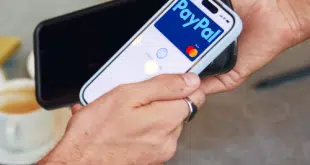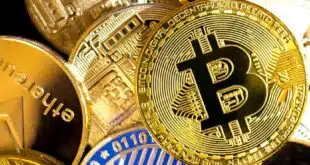JPMorgan Chase & Co. is lining up the necessary elements for its Chase Pay mobile service. The bank announced Thursday that more than 14,000 Shell Oil Co. locations potentially could accept the nascent mobile wallet.
Chase shared few details, such as when Chase Pay might be accepted at Shell stations, how transactions will work, which locations will accept it, or how it will be priced. It said that the Fuel Rewards program that Shell offers will be integrated into the app and that consumers will be able to pay for at-the-pump transactions using their smart phones in their cars, but not how that will be done. “We’ll announce details over the coming months,” a Chase spokesman says via email.
Shell is part of the Merchant Customer Exchange, a retailer consortium that shuttered its CurrentC consumer-facing mobile app this week. Chase Pay was to be available in the CurrentC app, too. The impending cessation of the CurrentC wallet does not have an impact on Chase Pay, the Chase spokesman says. “Our relationship with MCX continues to focus on Chase Pay, and working closely with MCX and its member merchants to launch Chase Pay at their locations,” he says.
Announced in October, Chase Pay is the bank’s effort to provide a mobile wallet for its customers. Shell is the latest merchant to announce its participation. In February, Chase announced Starbucks Corp. would accept the mobile wallet, which would be embedded in the highly successful Starbucks app. “We are live now with select e-commerce merchants and are planning to launch Starbucks and other partners later this year,” the spokesman said. These online retailers include eBags Inc. and several sites owned by 1-800-Flowers.com.
Chase Pay only works with eligible Chase credit or debit cards. A unique token is created for each enrolled card, which merchants use instead of the actual card number. To complete a Chase Pay online transaction, consumers enter their Chase online-banking credentials after clicking the Chase Pay button. To make an in-store transaction, the consumer will sign into Chase Pay on a mobile phone and tap Pay. The cashier will either direct the consumer to scan a Quick Response code or show the phone to the cashier. Chase said in October that all 94 million of its eligible credit and debit card accounts will be pre-loaded into Chase Pay wallets.
As with any payment venture, success hinges on three participants: the provider, consumers, and merchants.
The Shell deal “is obviously a big deal for Chase,” comments Rick Oglesby, principal at consultancy AZPayments Group and senior analyst at Double Diamond Payments Research, in an email message. “It is looking to build its value proposition for merchants to partner with it to shift volume to Chase, while simultaneously providing payment-cost reductions and marketing value to merchants in a closed-loop environment. This is a significant validation of that effort.”
What has not yet materialized, at least not significantly, is consumer adoption, something many mobile wallets struggle with.
“The one component not quite [there] is consumer adoption,” Oglesby says. “There’s lots of potential synergistic value if they can deliver a compelling consumer-value proposition, which remains the missing element. That element will need to come from close cooperation between the various entities, so the hard part is still coming.”




